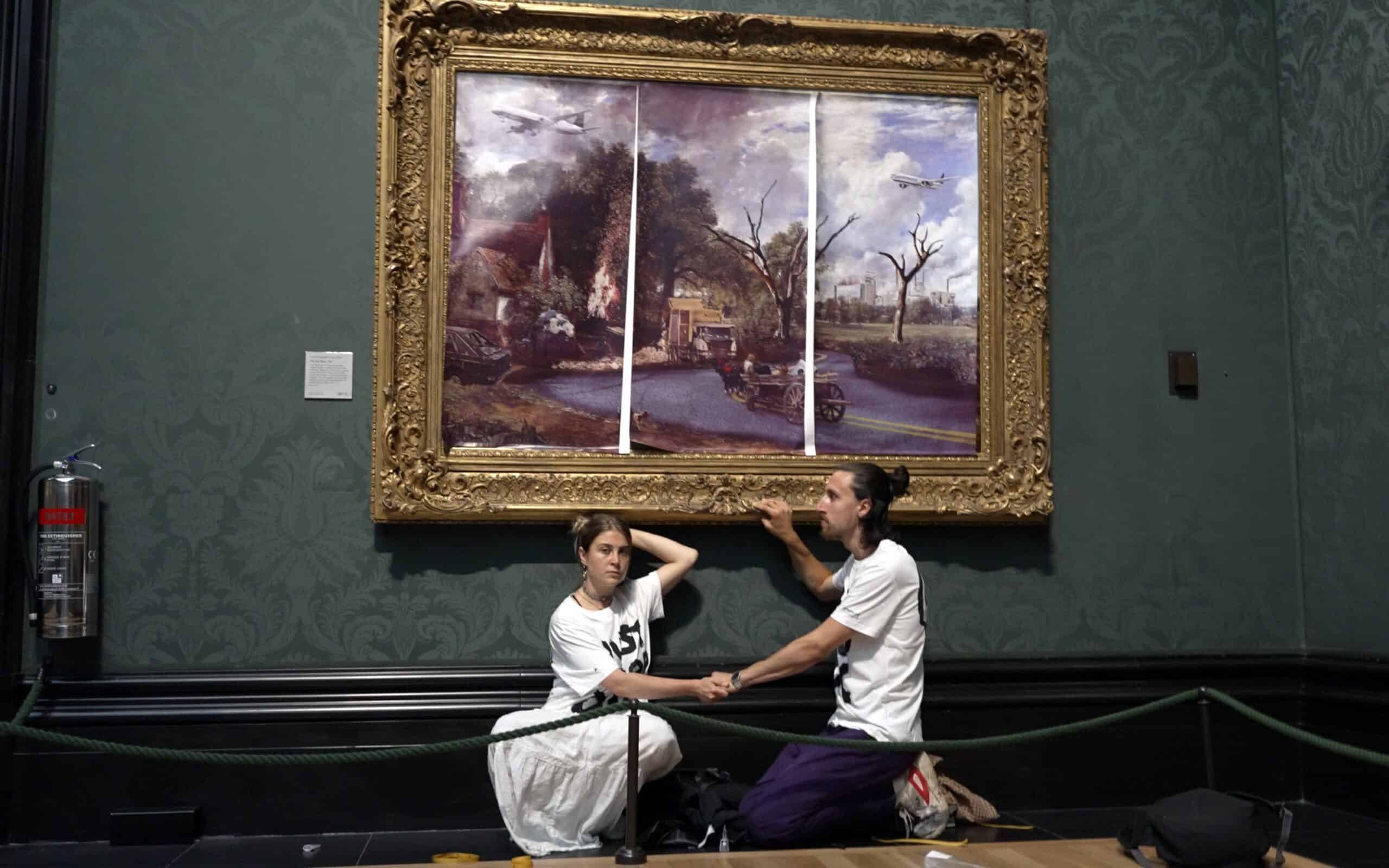Museums are also climate activists, racing to protect centuries of wood, paper, silk and metal from catastrophe. They’re allies in the fight.
Climate activists have made museums and priceless masterpieces the target of attention-getting action, whether by gluing themselves to Edvard Munch’s “The Scream” in Oslo or throwing soup on Vincent van Gogh’s “Sunflowers” in London. The arts community has now called on activists to stop targeting art, but they also want to make clear they’re advancing climate goals themselves—and have been for years.
“Climate change poses a growing threat for cultural heritage, tangible and intangible, museums, and their collections — from natural disasters to growing difficulties in maintaining conservation conditions due to extreme weather,” the Paris-based International Council of Museums (ICOM) said on Friday.
Now the museums find they must contend with demonstrators who may not fully understand the magnitude of the climate challenges they face, or that museums are “key actors in initiating and supporting climate action with their communities” who hope to honor “the concerns of climate activists as we face an environmental catastrophe that threatens life on Earth.”
The statement followed a letter signed by 92 museum leaders, from Florence and Vienna to Tokyo and New York, urging that the attacks stop. “The activists responsible for them severely underestimate the fragility of these irreplaceable objects, which must be preserved as part of our world cultural heritage,” said the original letter. “We have been deeply shaken by their risky endangerment.”
For museums and other cultural heritage sites, it’s not just the obvious concern each time that floods threaten paintings in Venice or wildfire bears down on the Acropolis. A 2021 international literature review of 191 papers found the climate impacts on cultural heritage have been discussed for at least 30 years, since Australian scientists first raised fears over sea level rise and archaeological sites.
The United Nations Educational, Scientific and Cultural Organization (UNESCO) issued a policy document on the issue in 2008, detailing concerns over rising temperatures, increasing humidity, wind, and other threats. They’re often perceived as outdoor threats, as with monuments, but these impacts reach into Europe’s most sophisticated cities and historic buildings.
Prague, for example, is likely to see an increase in salt crystallization due to humidity changes. That affects the internal walls of historic buildings and museums. Humidity also affects fabrics like silk and materials like wood, with climate change expected to alter wooden sculptures like the St. Francis of Assisi in Italy.
Paper damage, affecting books and manuscripts, is likely for priceless holdings in Izmir, Turkey. Mold growth is expected to affect collections in northern Europe and climate-driven insects are likely to do harm in Scandinavia. Metal corrosion, glass damage, the paper degradation on color photographs—the review authors make clear just how much is at stake.
It’s no wonder, then, that museum directors already working hard to protect cultural heritage from climate threats might find it ironic that they’re adding climate activism to the short list of immediate threats. The museums themselves are climate activists, in their evaluation and response to threats on the treasures of our collective human experience.
“To reach the full transformative potential that museums have for sustainable development, ICOM wishes for museums to be seen as allies in facing the common threat of climate change,” the organization said.
This story first appeared on Sustainability Times
© 2022 Sustainability Times.
This article is licensed under a Creative Commons Attribution-ShareAlike 4.0 SA International License.












